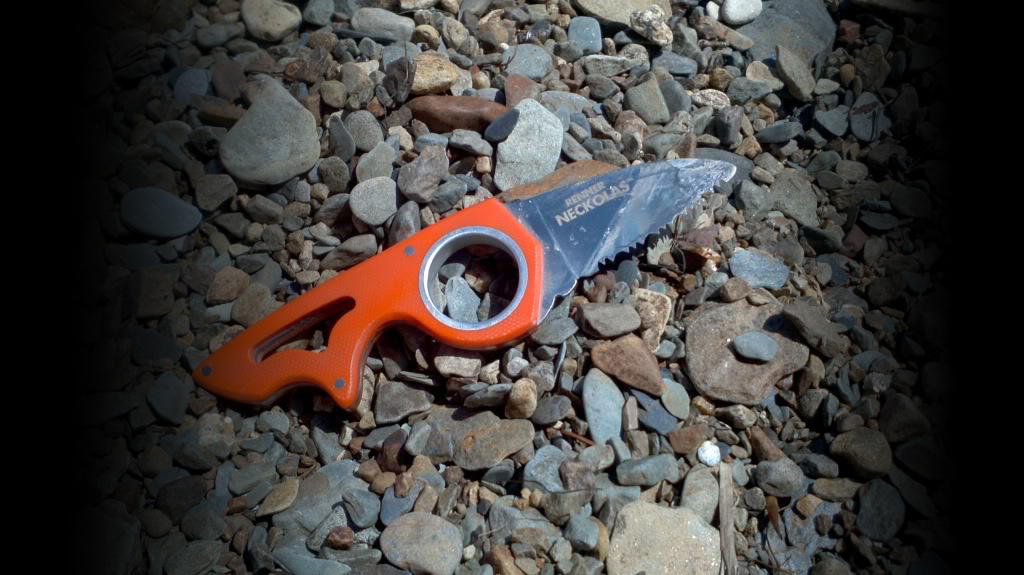The Ness is a folding version of Nessmuk fixed blade knife that's been around since the late 1800's. When it comes to history of the blade shape is a little tricky. The origin of the Nessmuk knife is unknown. The single illustration in "Woodcraft" is the only rendering or specific mention of the knife by Sears (George Washington Sears (1821-1890). Sears believed that there were great health benefits from being in the outdoors. Being a rather small and frail man, he also wanted to demonstrate that camping, canoeing and enjoying the outdoors was for everybody and not just the stereotypical rugged he-man types.
A young Narragansett Indian named Nessmuk (meaning "wood drake") befriended him and taught him hunting, fishing, and camping. Later he took that name as his pen name, and also as the name of a couple of his canoes. The Nessmuk knife has recently regained popularity as a great little knife. It's ergonomic shape and deep belly make it a great slicer, and many prefer it for food preparation.
Seeing how great of a cutter the Nessmuk style is, with its curved edge, a more pocket friendly version was a no brainier. The folks at Revo have reimagined the Ness with a D2 steel blade, G10 handles that come in a variety of colors, and a deep carry pocket.

Checking out the Ness, the first thing that grabbed my attention was the handle shape. I thought, man that's a crazy shape. What looks initially as a funny shape is probably one of the most ergonomic handles on a knife I've ever used. The handle is arched slightly so it follows the natural curve on your hand, providing a good cutout for your index finger and a place to lay your thumb. The handle is long enough that my entire hand wraps around it, no fingers floating or trying to find purchase on this knife. There is no jimping on this knife, but honestly it doesn't need it. With the ergonomic shape, it feels like it was made for your hand, and you don't need any addition texture to aid in your grip. The G10 handles provide enough grip where it meets my palm, and my finger tips to keep the handle firmly in place. The exposed liners towards the rear of the handle for the lanyard hole does not interfere with the handle comfort. The pocket clip is also low enough profile that it sits in the palm of my hand and is unnoticeable.

The Nessmuk style blade combined with a full flat grind, makes it great for cutting and scraping. Draw cuts are ok, but not as good as another blade shape that has a more downward facing tip. The full flat grind is bar-none my favorite blade grind. With this style there's no shoulders or secondary bevels to get in the way when cutting material. D2 steel has been around for decades and has been used to the point that people know it's reliability. It's not a super steel, and its corrosion resistance isn't as good as some other steels out there, but it holds its own. It's a good steel for bushcraft, and even everyday chores because of its great wear resistance and edge retention capabilities.

The pocket clip is decent, it's thin and low profile enough that it doesn't interfere when the knife is being used. Carries easily and it helps what is a decently sized knife, hide completely in my pocket. Only complaint I have with the clip is the thickness of the steel. I don't usually bend a pocket when I brush against stuff, but I did so with this knife. I caught myself before it got bent too badly, but it got my attention and I really noticed that the thickness might play a role. Beyond that it does a good job at pocket retention and retrieval.

The Revo Ness is a really good modern recreation of a historical knife style. The modern materials enhance what is already a really good design and help bring it into modern times. I really enjoyed this blade in spite of me not being an outdoor guy like I used to be. It has a place in today's EDC rotation and handles modern day tasks just as well as it would in the woods.






